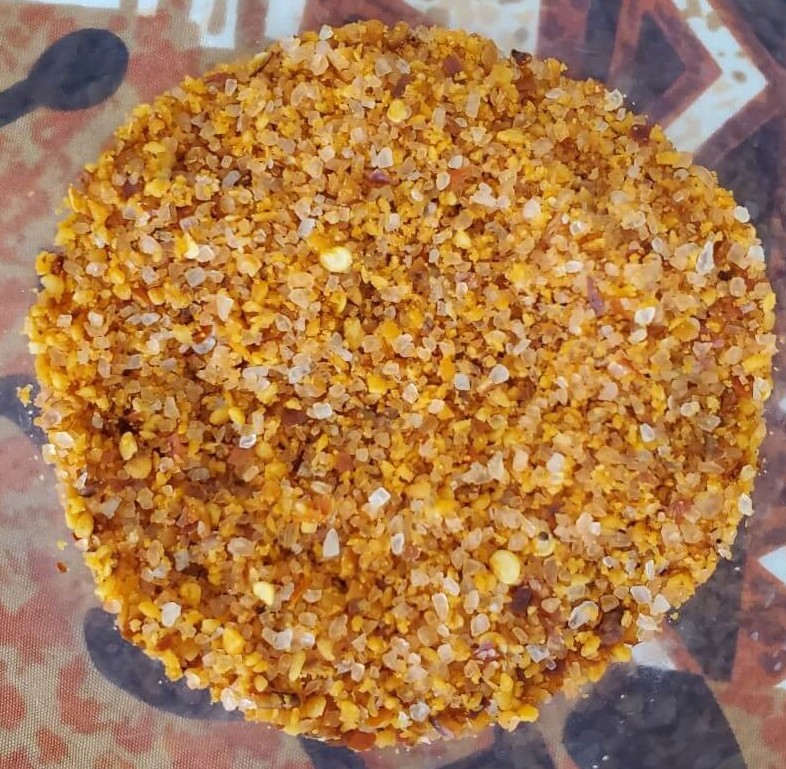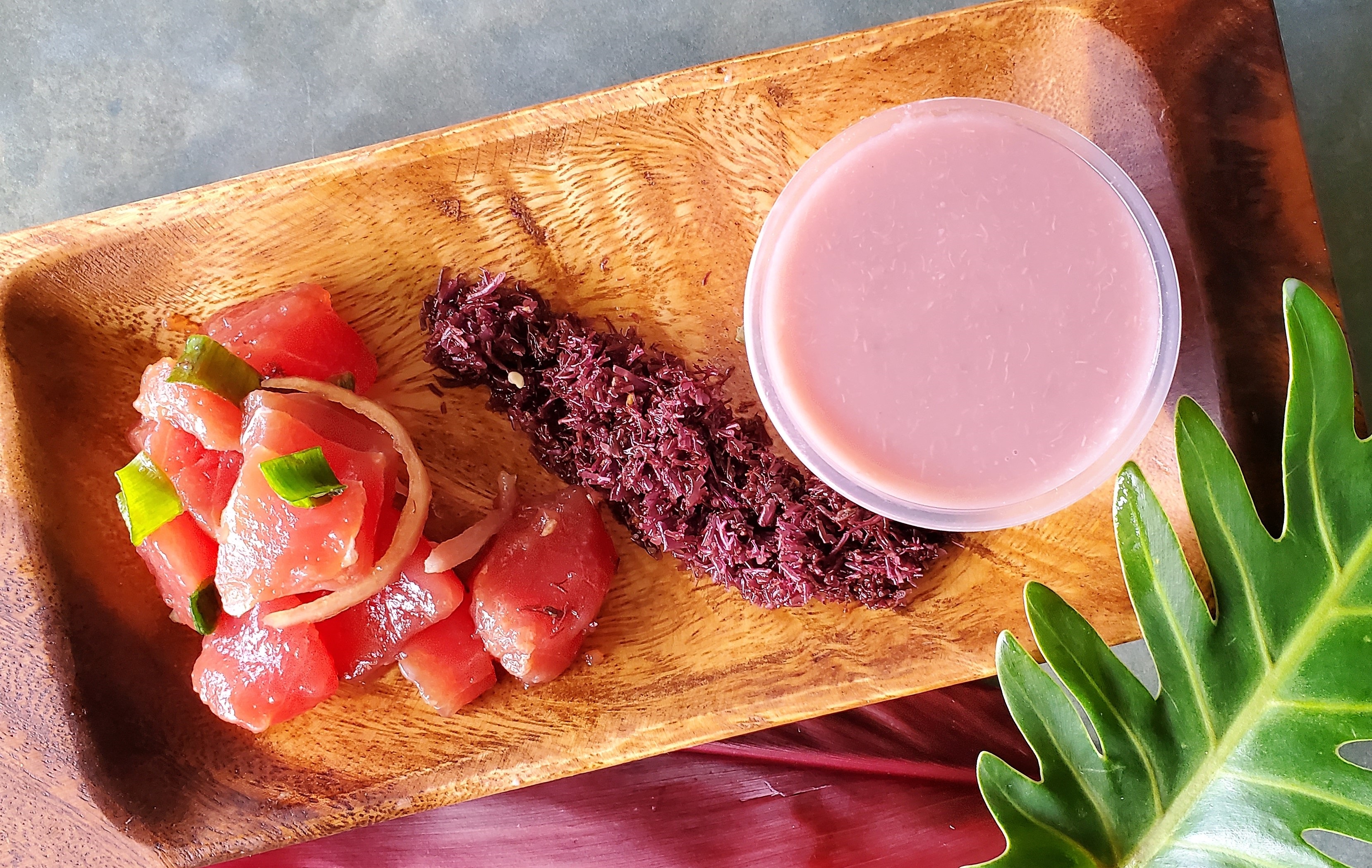The Polynesian Cultural Center is pleased to provide another in their series of traditional Polynesian dishes. Click here to see our other great Polynesian inspired recipes.
Written by Nina S. Jones
Limu is part of the amazing superfood triangle of the Hawaiian staples of fish (poke), poi and limu. This combination has been the base for both health and taste for decades throughout the villages of Hawaii. Limu, as legend has it, was discovered and prepared by Hawaiian women during the time of kapu (restrictions imposed on sections of society based on religious and Hawaiian cultural practices ) as a means to consume nutritious unrestricted foods. The tradition continued long after kapu was discontinued in 1819, and was only recently identified as something the Hawaiians have known for decades, that it one of the most nutritious forms of food currently available to man. There are over 600 types of seaweed in existence throughout the our islands. Two hundred are native to the area. Many of those are edible. Each have different textures, tastes, even structure. It truly is a remarkable dish with an amazing story, and we are so proud to share it with you.
This recipe was provided by one of our own – Laie’s Kekela Miller.
How do you describe a local icon like Keakela (Aunty Kela) Miller? Born and raised in La’ie – she reflects all that is beautiful and inspiring about the Hawaiian culture with her expertise not only in the art of hula, but her command of the art of aina – which is to say the essence of Hawaiian living. Aina stands for ‘that which feeds’. Kela feeds her ohana (family) through education, her culture through representation and her faith and heritage through sharing aloha with all she meets.
Limu description
Traditionally used as a seasoning to poke or green salads, as a garnish for stew, or simply as a side dish, limu is known as a superfood. This nutritious plant provides complex carbohydrates and contains Fucoidan (a sulfated polysaccharide) identified for its ability to build your body’s immunity.
There are many kinds of limu (click here to see a list from the University of Hawaii of some of the most popular strains of edible seaweed). One of the most common is ogo, which resembles delicate branches, and is usually red/brown or green. While it can be found in ocean waters, it is also farmed in fresh waters, so if you purchase it from a store it will most likely have a very mild in flavor. For people who have not grown up eating seaweed, this is probably preferable. But for those who love that ocean flavor, try kala (shaped rather like miniature Christmas trees). It has a strong, salty taste preferred by many locals.
Limu ingredients
- ½ pound of washed and air dry, fresh seaweed
- Inamona to taste (purchase at store, or follow the recipe for Inamona in the box below)
Limu instructions
The secret, besides finding the freshest seaweed possible, is to fully chop both the seaweed and the nuts. It takes patience to make sure that the pieces are small and even, but the result is extremely satisfying.
Step One: Using a clean, sharp knife, cut seaweed on a large cutting board until it is finely chopped. Take your time as you cut in even motions.

Step Two: Take a pinch of inamona. Sprinkle it over the seaweed. Repeat, tasting often. Seaweed should be salty, but not overpowering. Mix carefully, but thoroughly with a fork. Notice how fine both the seaweed and the nuts are chopped.
How to make your own inamona (roasted and seasoned kukui nut topping):

Purchase fresh, whole kukui nuts. Break nuts into kernel. Roast whole nuts at 325o until golden brown (approximately 90 minutes). Test by cracking one nut. If it is dark brown, it is ready. Cool thoroughly and then scrape out nutmeat. Chop meat finely and salt to taste. Add dried chili pepper (made at home or purchased). Kukui nut is oily, so roasting it adds a special flavor Should last at least 2 years.
Watch this fun local video at: https://www.youtube.com/watch?v=4612jBwQdfM, produced by the 7th grade ko kulu kai class at He’eia Fishpond, which not only shows you how to make fresh inamona but provides some great hints for picking and using the best nuts.

The Polynesian Cultural Center is a 42 acre adventure set on the beautiful island of Oahu in Hawaii, USA. Dedicated to preserving and protecting the cultures of the Pacific isles, we proudly present hands-on activities, an outdoor luau with live entertainment, and the award winning “HA: Breath of Life” evening show, with a cast of over 100, including heart-pounding fireknife dancers and firewalkers, special effects, and an erupting volcano! To learn more, click here.

Nina Jones, a mainland gal from way back, is now a transplanted Islander. With her husband of 43 years, she has lived in La’ie since serving a mission at the Polynesian Cultural Center from 2014 – 2016. She now serves as the blog manager for the Center. Her hobbies include swimming, traveling, studying and writing about what she is learning from the various Polynesian cultures. Her blogs focus on their history, beliefs, practices and – as an added bonus – delicious food! To her, Polynesia is not just a place to visit, it is a way of life and she is very honored to be able to be a part of their amazing world.


A beautiful culture blog. keep it up .